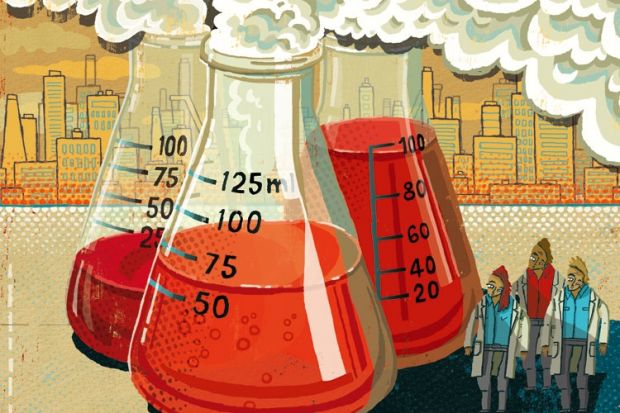
Source: Elly Walton
When we needed to crack the Enigma code, we spread our eggs across many baskets. Out popped Alan Turing, a genius and loner who’d never be funded today
Not long ago, the Nobel prizewinning scientist James Watson, co-discoverer of the structure of DNA, made a wry comment in a seminar. It went something like this: “If you are not in a big research group, think about packing your bags to leave science.” It is a view that is reinforced by the government’s plans to sequence 100,000 human genomes, but clashes with a recent Radio 4 discussion on Start the Week that pointed out how the promises used to sell “big science” are, by and large, pie in the sky.
For genome sequencing, the gold at the end of the rainbow usually involves cures for cancer, used to justify the first genome sequence, the 1,000 Genomes project and now 100,000 more. These promises were made before and will no doubt be made again, apparently without even a backward glance at whether they were fulfilled.
As a geneticist, I should surely welcome such projects, but I do not. I am passionate about my discipline but my heart bleeds to see the way British science is being sent inexorably down the pan by the state’s focus on throwing more and more resources at big-budget, industrial-scale data collection. This approach may delight sequencing companies such as Illumina, but it is undermining our science base for a number of reasons.
First, by taking ever-larger bites from a modest and diminishing funding pot, big science starves the wider scientific community. Consequently, the next generation of scientists is already leaving, and many undergraduates I have spoken to feel that their chances of getting one of the handful of studentships on offer these days are too low to be worth the effort.
Second, genome sequencing offers little science training because most of the work is done by machines and technicians. Third, it is the antithesis of good science, being largely hypothesis-free and involving little experimental design. Why are we placing our few remaining publicly funded eggs into proportionately fewer and fewer baskets? Certainly it cannot be because big science offers good value for money: it clearly does not. Instead, the reason seems to lie with the way success is being measured.
Currently, the peer-review process focuses (unwittingly?) on the research group as the unit of productivity. Heads of groups typically add their names to all papers, so the heads of larger groups inevitably appear more productive (and more fundable) than those of smaller groups. This effect is then exaggerated by self-citation because more authors equal more citations.
At the same time, funding bodies seem ever more impressed by shiny big projects coupled with glamorous promises rather than realistic chances of finding out anything useful. The mantra seems to be hype over substance, as embodied in the Pathways to Impact initiative.
Past experiences are a good guide to future success. Previous genome sequencing has identified several important cancer genes but these are used more as indicators of risk than as therapeutic targets. The breakthroughs promised by ever-larger sequencing projects have not materialised and are unlikely to materialise.
When we needed to crack Nazi Germany’s Enigma code during the Second World War, we brought together as many different bright mavericks as we could find. We spread our eggs across as many baskets as we could and out popped (among others) Alan Turing, a genius but a loner who would never be funded today. Industrial science ignores this lesson and, by doing so, is destroying our scientific base.
Next-generation scientists are growing up as small, inflexible cogs in larger machines – the exact opposite of the environments that would yield the innovating, free-thinking leaders of tomorrow.
A floral analogy might be a good way to end. An ambitious but short-sighted gardener uses most of his remaining cash to buy a mature exotic tree to set off an already prizewinning herbaceous border. This will impress my friends, he thinks. Only when the Sun comes up does he realise how the shadow cast falls right across his existing plants, which wither and die. When the tree itself dies in the next hard winter, it provides some nice logs, but all the flowers have gone and the gardener has to start again from scratch.
Register to continue
Why register?
- Registration is free and only takes a moment
- Once registered, you can read 3 articles a month
- Sign up for our newsletter
Subscribe
Or subscribe for unlimited access to:
- Unlimited access to news, views, insights & reviews
- Digital editions
- Digital access to THE’s university and college rankings analysis
Already registered or a current subscriber? Login




